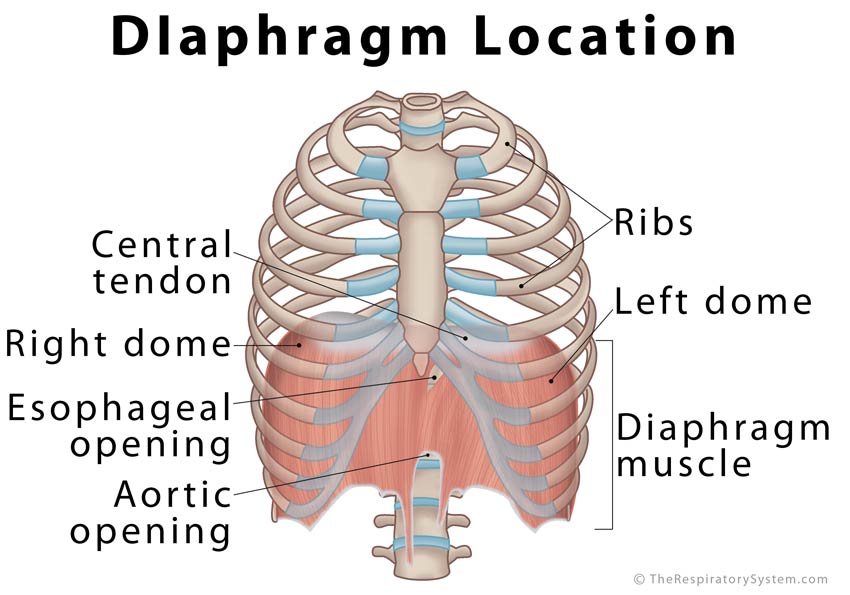As anyone who has ever taken a Pilates class knows, breath is one of the main Pilates principles. In Joseph Pilates’ book Return To Life Through Contrology, he talks a lot about breath and its importance. In it, he says:
“True heart control follows correct breathing which simultaneously reduces heart strain, purifies the blood and develops the lungs. To Breathe correctly you must completely exhale and inhale, always trying very hard to squeeze every atom of impure air from your lungs” and “complete exhalation and inhalation of air stimulates all muscles into greater activity soon the entire body is abundantly charged with fresh oxygen.
Although his writings were originally published in 1945 and he set up his first studio in 1926, he had an unquestionable understanding of the body and breath and how it works. In Pilates, we treat the body as a whole integrated unit. Everything is connected via fascia, both anatomically and neurologically. This is no more apparent than in the function of the diaphragm; it is impossible to talk about breath or to understand the importance of breath unless we know a little about the how this organ functions.
The function of the diaphragm is paramount not just in breathing, but also in the function of the body as a whole. There is plenty of research on this topic, and in this paper by Bruno Bordoni and Emilano Zanier they discuss the anatomic connections of the diaphragm and the influence of respiration on the body as a whole. We get a great insight into the diaphragm and how it is interconnected with the rest of the body and its systems.
They conclude that the diaphragm muscle not only “plays a role in respiration, but also has many roles affecting the health of the body. It is important for posture, for proper organ function, and for the pelvis and floor of the mouth.”
I would definitely recommend having a read of the whole article, it is fascinating! So now when I harp on about roof of the mouth, the diaphragm, and the pelvic floor all being connected you’ll know some of the science!
For full body health, it is so important that we can breathe fully and properly, that we can attain and maintain proper body alignment, and that we can recognise and deal with imbalances and restrictions that we may have in our bodies. If we can pinpoint where the problems are coming from we can correct them most of the time. Forward head posture is detrimental for efficient breathing to take place, as is a pelvis that is out of alignment. There can be many reasons for any one of these postures to be present and problematic, e.g. illness, injury, occupation, unilateral sports, prolonged use of computers or phones, pregnancy, feeding etc. An instruction we often hear in Pilates classes is to “pull your navel into your spine”; this can be counterproductive, as it doesn’t allow the diaphragm to contract fully. It can also cause a bearing down of pressure, which can worsen conditions such as hernias, prolapse, and pelvic floor weakening.
To get a better understanding of how important breath is for overall health, and the importance of the diaphragm and its pivotal role in the powerhouse (more commonly known as the core), here’s an overview of respiration and the muscles involved:
We have two types of Muscles here: muscles of INSPIRATION and EXPIRATION
The muscles of inspiration contract and draw air into our lungs. The diaphragm is one of the main muscles of respiration, and it also separates the thoracic and abdominal cavity. The external intercostals (which raise the ribs and expand the chest cavity) assist the diaphragm in inspiration. During normal breathing the diaphragm contracts into the abdominal cavity to allow the lungs to fill.
There is another set of muscles used in inspiration, known as the accessory muscles of inspiration. These we use in times when we are more active, such as sudden explosive bouts of exercise, or when we are stressed and anxious, these muscles are sternocleidomastoids, scalene, serratus, and pectoralis. (Type A people tend to use these muscles a little more, along with glute and pelvic floor clenching, causing a plethora of problems)
Expiration occurs a little more naturally when the diaphragm relaxes back into the thorax. The muscles involved in expiration are the internal intercostals, rectus abdominis, external and internal obliques, transversus abdominis, and the pelvic floor. These muscles become more involved when they contract during forced exhalation or active breathing periods.
Our diaphragm plays a crucial role in spinal stability and posture. Think of our core as a cylinder; the diaphragm as the top, the abdominals (including Rectus abdominal, external and internal obliques) to the front, and the paraspinals and paravertebral muscles to the back, and the Pelvic floor musculature to the bottom. It is so important that all of these muscles can function with restriction thus being able to fully contract and relax working together in the various roles. They are all connected through innervation and fascial connection, both anatomically and neurologically, so we must treat them as such in our exercise programmes in our classes. That is what we set out to achieve; our corrective health programmes focus on creating strong, flexible, balanced bodies, functioning pain free bodies.



